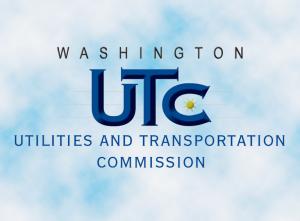Rate Increase Paves Way for Accelerated Closure of Coal Plants

In a proceeding it described as among the most “complex litigations” to come before it in the last 20 years, the Washington Utilities and Transportation Commission has adopted a settlement under which an electric and natural gas utility was awarded a small measure of rate relief for its electric operations, but the additional revenues are earmarked for moving up the timeline for decommissioning and remediating four coal-fired generating facilities located in Montana.
In January 2017, the utility, Puget Sound Energy (PSE), had filed its first general rate case in five years. In its application, the utility acknowledged the longstanding debate over the future of the four Colstrip coal-based generating facilities, which are located in southeastern Montana. The utility owns 50% of the assets and has been in ongoing talks with a number of stakeholders about shutting down the facilities in the next decade. The settlement ultimately crafted by the parties calls for an electric rate increase of about one percent, the proceeds of which will be put toward closure of Colstrip Units 1 and 2 by 2022.
Although the rate agreement does not set forth a specific date for closure of the other two units, PSE indicated that it expects Units 3 and 4 to cease operations by the end of 2027. In seeking to raise its rates, the company had projected a need for $68.3 million in additional revenues, an increase of 3.2%. In the end, though, the settlement provided for an increase of around $20 million, or one percent. The parties also stipulated to a lower rate of return on common equity (ROE) than what the utility had requested initially (9.50% versus 9.80%). On the matter of ROE, however, the parties were not unanimous. The most vocal opposition came from the Public Counsel Unit of the state Attorney General’s Office, which advocated for an 8.85% ROE. In presenting its “alternative view” on ROE, the Public Counsel claimed that commission staff and others who originally argued in favor of a 9.2% or lower ROE had abdicated their responsibility when they assented to the 9.5% ROE identified in the settlement. The Public Counsel contended that commission staff and other parties had first recommended a lower range of reasonableness which would not have included the 9.5% value.
The commission, however, rebuffed the Public Counsel’s analysis. In doing so, the commission reminded the Public Counsel that determinations on ROE involve a two-step process. The first step is to determine the range of possible returns for a company based on various cost-of-capital factors. The second is to decide on a subset range of reasonable returns. From the commission’s perspective, the Public Counsel had predicated its suggested ROE on just the first step, which would have included a far broader range of returns. But, the commission said, when considered in terms of current market conditions, the returns granted other utilities of comparable risk, and PSE’s present operating circumstances, it was clear that while an 8.85% ROE might fall within the range of possible returns, it could not be supported as reasonable for the utility. Moreover, the commission pointed out that reducing the utility’s ROE from its currently authorized level of 9.8% to 8.85% would run counter to the commission’s longtime rate-making tenet of gradualism.
The commission noted that while gradualism is often invoked from the ratepayer’s perspective, it is equally applicable to utilities. The commission concluded that it would be patently inequitable to lower the company’s ROE by almost one full percentage point all at one time. Although return on equity almost always engenders some debate, the issues surrounding the Colstrip power plants took center stage in the PSE proceeding. In a 2007 rate case, the utility had succeeded in obtaining longer depreciable lives for the coal units, extending them out to 2035 for Units 1 and 2 and to 2045 for Units 3 and 4. But that extension meant that the company was recovering less depreciation expense year by year going forward. When state energy policies began to change their focus from fossil fuelfired generation to renewables, which modifications really took off starting in 2010, neither the utility nor the commission seemed to grasp what those new policies might mean for PSE and the Colstrip units. As new and updated clean air initiatives took root, the effort to close coal-fired facilities picked up speed, with it eventually becoming clear that PSE would have to devise a plan for shutting down the Colstrip units sooner rather than later, their recently approved extended lives notwithstanding.
After months of discussion, the utility and other stakeholders arrived at an agreement under which the company would be permitted to increase the depreciation component of its electric rates to take into account the nowshortened time period over which PSE may recoup the net book balance remaining on its Colstrip assets. However, in recognition of the “significant, even dramatic” increase in rates that such a move would entail, the settling parties stipulated that the increase was to be offset in part by monetizing production tax credits (PTCs) that have been accumulating. The commission reported that the utility’s present PTC accounts appear adequate to fulfill the offset objective for Units 1 and 2, which are to be retired by year-end 2022. And, the commission said, they might even be sufficient to cover Units 3 and 4 several years later. The commission thus found that allocating the PTCs to help address the unrecovered depreciation expense for the Colstrip facilities was a reasonable plan and would help minimize the rate increase otherwise needed by the company.
The commission commended the parties for proposing a settlement that is sensitive to the economic impacts that the premature retirement of the Colstrip plants will have on the community where the units are located. The commission related that the agreement requires the utility to provide a total of $10 million to Colstrip, Montana, with half of that amount funded by ratepayers and the other half by shareholders. It is anticipated that such funds will be used for community planning and economic development purposes. While PSE customers will see higher electric bills as a result of the settlement, the stipulation actually calls for a not insignificant decrease in the company’s natural gas revenue requirement.
The commission recounted that PSE’s natural gas rates will go down by $35 million, a reduction of 3.9%. The commission stated that the decrease is greater than the one originally proposed by PSE, which was for a reduction of $29.3 million, or 3.2%. It added that the same 9.5% ROE will apply to both electric and natural gas operations. Washington Utilities & Transportation Commission v. Puget Sound Energy, Dockets UE-170033, UG-170034, Order 08, Dec. 5, 2017 (Wash.U.T.C.).



